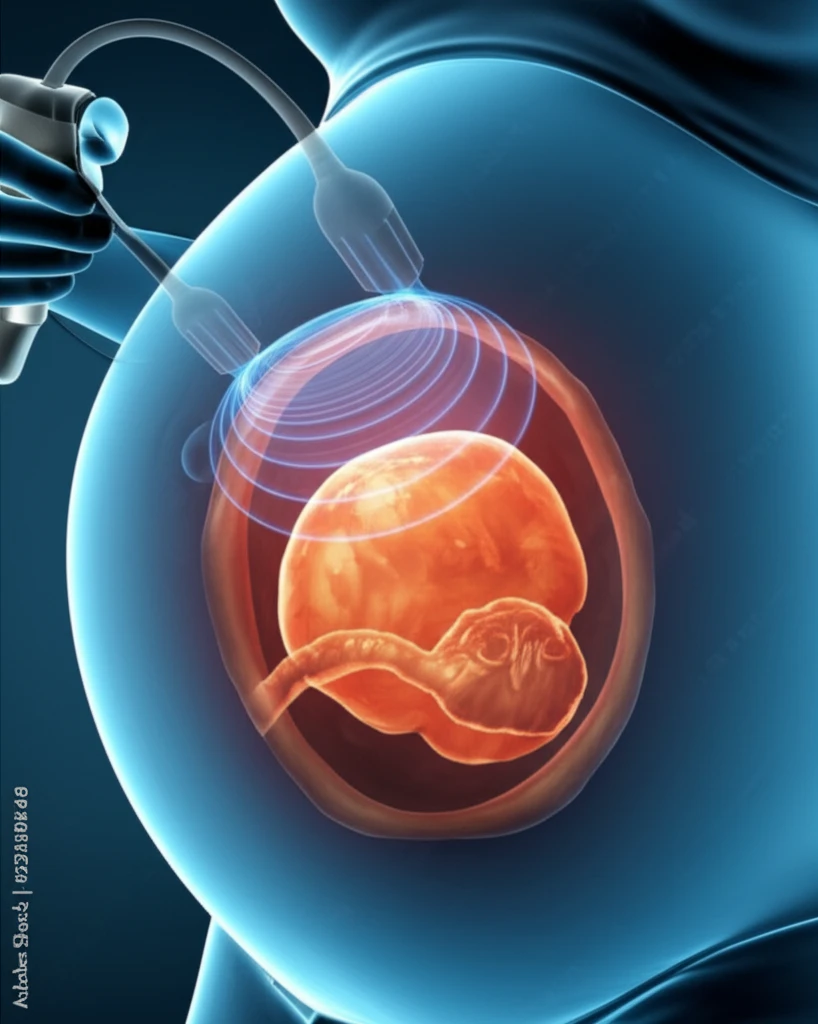
Can Ultrasound Zap Away Dangerous Placenta Problems?
"New research explores non-invasive ways to treat placental vessel issues, potentially revolutionizing prenatal care and fetal health."
Pregnancy can come with a host of complications, and sometimes those complications involve the placenta. The placenta is critical for fetal development, supplying oxygen and nutrients while removing waste. When things go wrong with the placental blood vessels, serious problems like twin-twin transfusion syndrome (TTTS) can arise. Current treatments can be invasive and risky, underscoring the need for safer, less invasive solutions.
Now, imagine a future where doctors can address these placental issues without surgery, using focused ultrasound waves to precisely target and correct problematic blood vessels. Recent research is bringing that future closer to reality. Scientists have been exploring the use of high-intensity focused ultrasound (HIFU) to occlude placental blood vessels non-invasively.
This article dives into a groundbreaking study where researchers successfully used HIFU to block blood flow in placental vessels in a sheep model, all without making a single incision. We'll explore how this technology works, why it's a game-changer for prenatal care, and what hurdles remain before it can be widely used in human pregnancies.
How Does Focused Ultrasound Help?

High-Intensity Focused Ultrasound (HIFU) isn't new. It's already used to treat various conditions, like uterine fibroids and even some cancers. The idea is simple: focus high-energy ultrasound waves onto a specific point, generating heat and causing targeted tissue damage. In this case, the target is placental blood vessels.
- Non-Invasive Approach: HIFU is delivered through the skin, eliminating the risks associated with surgery.
- Targeted Precision: Ultrasound imaging guides the HIFU, ensuring only the problematic vessels are affected.
- Reduced Complications: By avoiding surgery, the risk of infection, bleeding, and preterm labor are minimized.
The Future of HIFU in Pregnancy
While the sheep study is promising, it's important to remember that there are still hurdles to overcome before HIFU can be widely used in human pregnancies. One concern is the potential for skin burns, which occurred in some of the sheep. Researchers are working on refining the technique to minimize this risk.
Another key area of focus is ensuring the long-term safety and effectiveness of HIFU. More research is needed to understand how HIFU affects fetal development and placental function over the long term.
Despite these challenges, the potential benefits of non-invasive HIFU for treating placental vessel problems are enormous. It offers a glimmer of hope for safer pregnancies and healthier outcomes for both mothers and babies, marking a significant leap forward in prenatal care.
